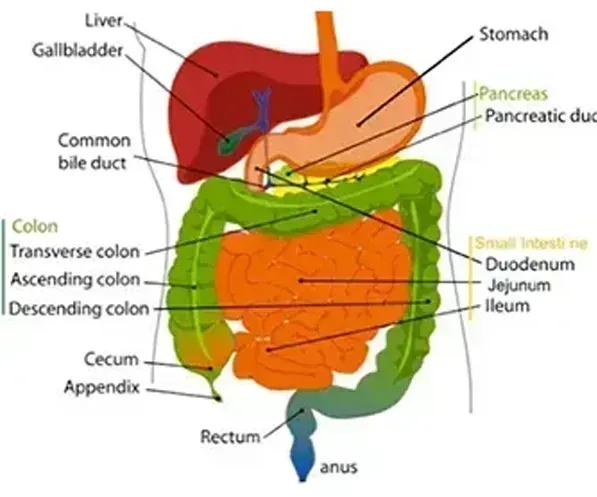

GI Cancers
Gastrointestinal (GI) cancers account for about 10 percent of the excess risk of cancer after HL; the relative risk is about 2.5 with an absolute excess risk of about 6 per 10,000 HL patients per year. The risk first increases at five years after treatment and may continue to rise through 20 years.
Much greater risks of esophageal, colorectal and gastric cancers occur in patients treated under age 20. The relative risk of GI cancer falls with increasing age at first treatment in adults. The risk of developing colorectal cancer was doubled in HL survivors with a first-degree relative with colorectal cancer, compared to those without a positive family history.
The type of therapy for HL appears to influence the risk of developing secondary GI cancer. In one study of 5519 British patients with HL, the risk of developing secondary GI cancers was highest after combined modality therapy (RR = 3.3), lower after RT alone (RR = 1.7), and nonsignificantly increased following chemotherapy alone. Others report similar findings.

In another study of 19,882 HL survivors diagnosed from 1953 to 2003, 89 patients were diagnosed with gastric cancer with estimated cumulative incidence of 0.39 percent (95% CI 0.28-0.50 percent) at 15 years and 0.92 percent (95% CI 0.70-1.13 percent) at 30 years. The risk of gastric cancer increased with increasing gastric radiation dose and with increasing exposure to alkylating agents, particularly procarbazine and dacarbazine.
The risk of pancreatic cancer after HL has been associated with radiation dose and cumulative doses of alkylating chemotherapy, and the risk of colorectal cancer has been associated with radiation dose and procarbazine dose.
The prognosis of HL survivors who develop GI cancers appears to be worse than that of patients with an initial primary GI cancer. A retrospective study of the Surveillance, Epidemiology, and End Results (SEER) database compared the survival of 209 HL survivors with secondary GI cancer (105 colon, 35 stomach, 30 pancreas, 21 rectum, and 18 esophagus) to that of 484,165 patients with first primary GI cancers. While outcomes following localized stage colon cancer were similar to those with primary disease, HL survivors who developed advanced stage colon cancer or stomach cancer had significantly worse survival than those with primary disease.
Mesothelioma — Patients with HL appear to be at an increased risk for developing malignant mesothelioma. This was best demonstrated in a cohort study of 2567 patients from the Netherlands who survived at least five years after treatment for HL. After a median follow-up of 18.1 years, malignant mesothelioma had been diagnosed in eight men and five women with a median time from treatment of HL to diagnosis of mesothelioma of 27.7 years. When compared with the general population, there was an almost 26-fold increased risk for mesothelioma among patients treated for HL (standardized incidence ratio of 25.7) resulting in an absolute excess of 3.5 cases of mesothelioma per 10,000 patients per year. In an exploratory analysis, factors that appeared to increase this risk included female gender, first treatment at age less than 31 years, and the incorporation of RT.